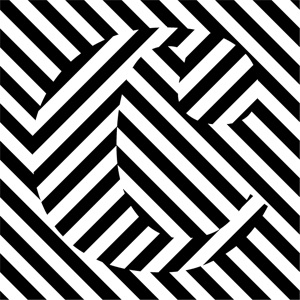Tutorial - Photogrammetry for 3D Printing
Guest tutorial @ Shapeways
What is photogrammetry?
Photogrammetry is the science of making measurements from photographs, especially for recovering the exact positions of surface points.
There are plenty of software solutions to achieve this, each of them targeted to specific industries who use this technology to scan objects, places and environments.
*A good place to start is:
wikipedia: https://en.wikipedia.org/wiki/Photogrammetry
Tutorials: https://medium.com/realities-io/getting-started-with-photogrammetry-d0a6ee40cb72
Models: check some models made with photogrammetry here: https://sketchfab.com/search?q=photogrammetry
What is the equipment you will need?
To start with photogrammetry you’ll first need a set of photos that describe the object form as many angles as possible, and a powerful software to process them into a valid 3D model.
Digital Camera
You can use your phone, no need to go out and purchase an expensive camera.
Photogrammetry software
Free: 3DF Zephir: Windows
Paid: Autodesk ReCap Photo: Windows
Paid: Agisoft Photoscan: Windows, Mac, Linux
RealityCapture: Windows
Open Source:Regard 3D: Windows, Mac
Mesh Editing software
3D Modeling Software
Tinkercad is great for beginners.
I personally used a cellphone to take the photos, and Autodesk’s Recap to build the 3D model.
The mesh editing (scan clean-up) was done with MeshLab and Meshmixer.
The design was made in Rhinoceros 3D.
Steps & Tips
Step 1: Select Your Texture or Object
In order to begin, select the object, texture, or pattern you would like replicate and use to create your ring. I choose a tree within the French Pyrenees.
It is best to avoid shiny or transparent objects as they are difficult to capture.
Step 2: Take Images of Your Texture or Object
To begin you will need a set of photos of the object to process them into a valid 3D model.
Using a digital camera (your phone will work), take images of the object. Make sure to get all angles of the object from the same or close to the same distance. Bernat went around the object 3 times (one at eye-level, one looking up, and one looking down) in order to ensure that every angle was captured. In total, Bernat took 56 photos at 2049 × 1537 pixels. You do not need this exact amount but it is helpful to understand that the more photos you have, the more data you have to work with.
Note: It is important to have consistent lighting conditions while you are shooting your object. If you are outside, it is best to shoot the images on a cloudy day to avoid shadows. If you are inside, bright lighting is necessary to receive the clearest photos with the most data. Do not edit the photos, as they should contain the EXIF data for better processing (lens used, shutter speed, etc).
Step 3: Upload and Process Photos
Upload your photos to the photogrammetry software you selected above. Bernat used Autodesk’s RecapPhoto and processed the 56 tree images he took. For the photogrammetry software you selected, follow its instructions on processing and stitching your photos. This can take anywhere from a few minutes to a few hours depending on the settings and photos you have chosen.
Step 4: Clean Up & Cut Mesh
The mesh that was then revealed was larger than necessary and contained more data than for the object he was looking to create, including nearby trees and buildings. Bernat went ahead and cleaned the mesh using MeshLab. He selected the bark and tree he wanted to keep for his design and deleted the rest of the scan data.
The bark was now isolated and could be cut and brought to scale. You can then download the file from MeshLab and import the design into MeshMixer. From there use the PlaneCut tool to trim the mesh to the desired thickness.
Step 5: Create a Mesh Solid
This can be done with another modeling software of your choice. Bernat used Rhino to turn the surface into a solid, using the Mesh command. Once the design has been turned into a solid, you can then edit the design to create a ring. Cut a hole from the center of the solid and fillet the interior edges.
